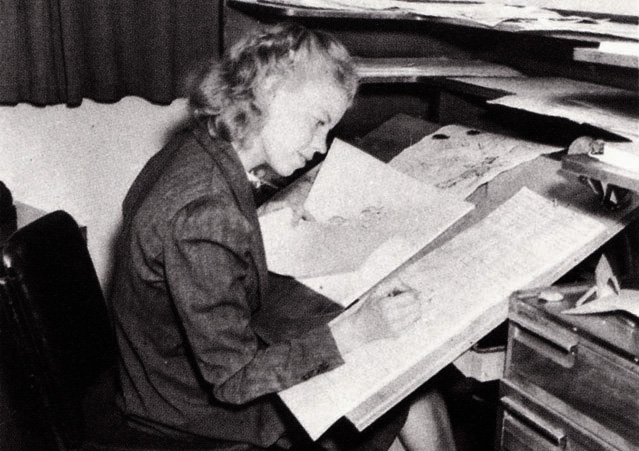
When animation became a film medium during the turn of the century, it was immediately a male-dominated art form. The ability to create a moving picture requires a lot of concentration and hard work, which was not seen as a task for women. Many productions stated that women were not allowed to physically animate; they were only allowed to work in the inking and painting departments. This sexism was primarily evident during the beginnings of Walt Disney Productions. This letter was sent to a woman named Mary V. Ford, who applied to work in Disney’s animation department:

Many of the women who worked in the animation department had little to no experience, but wanted to learn. Walt Disney, a.k.a “Uncle Walt” took them in to be trained in the simple yet tedious process of inking and painting. The inking and painting department was known as “The Nunnery”, since Walt Disney only hired good-looking women. Women who worked there were treated like slaves during the production of Snow White. It was compared to working in a factory with terrible conditions and long, hard hours. The head male animators earned at least $300 per week while the women made only a mere $26-$32 a week. Women also were encouraged to date solely in the animation department. If the women were married, then they would try and break into the industry through their husbands working at the studios.
Eventually, many women made breakthroughs, especially at Disney. Bianca Majolica was the first woman hired for the Walt Disney story department. Retta Scott was the first woman credited in an animated film, and also the very first woman to animate for Disney. She was promoted from “The Nunnery” and hired in 1938. Mary Blair is one of the most famous women that worked for Disney. She worked on the concept art for The Three Caballeros, Cinderella, Alice and Wonderland, and most famously, Peter Pan. She also designed the “It’s a Small World” attraction at Disney World.
“Uncle Walt” had some controversial views on women. Meryl Streep has even called Disney a “gender bigot.” Despite the letter shown above, it was also alleged that he was afraid of “women and cats.” On the contrary, he also has stated “If a woman can do the work as well, she is worth as much as a man,” According to studio archives Disney said: “The girl artists have the right to expect the same chances for advancement as men, and I honestly believe they may eventually contribute something to this business that men never would or could.” In 1941, Walt Disney wanted to see more women working in the studio due to the fact men were being drafted into the army at the beginning of WWII. 1941 was also the year of the Disney animator’s strike, which led to many of Disney’s main animators leaving. Because a lot of the head animators have left, the women were sent to work on propaganda films, and others worked on one of Disney’s more experimental films of that time, Dumbo. Many hidden references to the Disney strike can be found in that film.

This sexism continues today. More men than women are hired in animation departments. Even in feature animated films, Pixar especially doesn’t have a lot of strong female women. One of the strongest female characters in Pixar films known to date is Merida in Brave. The creator of Brave, Brenda Chapman, was even fired from her own project by Pixar, and replaced by a man. No women were even involved in the making of Ratatouille. Disney’s Frozen is the first highest grossing animated film that was created by a woman (Jennifer Lee).
There were some other very important women animators to note. Lotte Reiniger was one of the first women animators in Germany. She was famous for her silhouette animations, especially for working on one of the first feature-length animated films, The Adventures of Prince Achmed. Lillian Friedman was one of the first female studio animators with credit at Felischer Studios, which created Betty Boop and Popeye. Mary Ellen Bute was the first American to make abstract films and the first to use electronically generated images in film. Many women today work independently in animation, due to more creative and experimental freedom with this approach.


